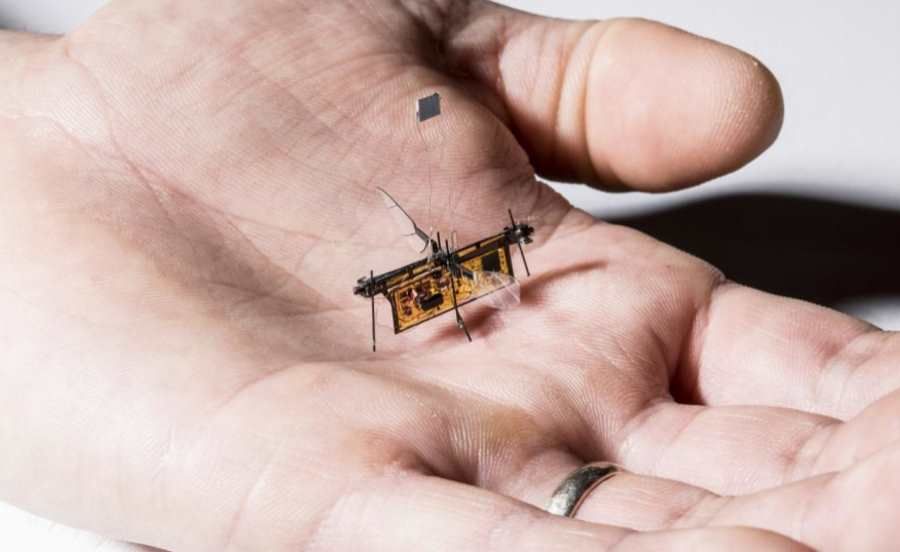A new generation of insect-sized flying robots

A new generation of insect-sized flying robots
Mechanical flying insects can help with many tasks where you need to use a small tool. However, until now, such small robots have been severely limited. Seattle engineers made a breakthrough on this issue and developed a method to wirelessly power mechanical insects.
The robots soar through the air fluttering their tiny wings because they are too small to use propellers like their larger cousins. But the small size has its benefits: these robots are inexpensive to produce and can easily explore tight, hard-to-reach areas.
Previous mechanical insects, although they flew, were tethered to the ground via a power cable because batteries would have been too heavy. The control system was also a problem. These difficulties have been solved by engineers at the University of Washington, ktoers have created a tiny robotic insect that flies autonomously. Syndromeoł scientistow presented the results of their work at the International Robotics and Automation Conference in Brisbane, Australia.
The new RoboFly is slightly heavier than a toothpick and is powered by a laser beam. It uses a small circuitod on board, whichory converts laser energy into enough electricity to operate the wings.
– Previously, the concept of flying robotsow of insect-sizedow was pure science fiction. It was hard to think that we could make them work without a cable – said Sawyer Fuller of the University of Washington, who was involved in the project. – Our new wireless RoboFly shows that these types of robots are much closer to becoming a reality than we thought, he added.
The engineering challenge was a flutter of wings, ktory is an energy-intensive process, and zarowno sourceopower unit, as well as the controller that directs the wings, are too large and bulky to be installed on a small robotic. In addition, the robot should moc act independently. Fuller and his colleagues decided to use a narrow laser beam to power the robot. It has turned out to be a hit. A beam aimed at a photovoltaic cell mounted above a mechanical insect turns laser light into electricity. – This is the most efficient wayob to transfer a lot of power quickly without adding too much weight to the – explained coorouter of Shyam Gollakot’s invention.
Even so, the laser alone does not provide enough energy for flight. Therefore, the unitoł designed the system, whichory amplifies seven voltsoin the outgoing photovoltaic cell up to 240 voltow needed for flight. To give the robot control over its own wings, engineers added a microcontroller to the same chip. – The microcontroller acts as a mozg real fly. Mowi „muscles” wings, when to act – explained another of the wspołautoroin the project, Vikram Iyer. The controller sends the necessary energy to the wings in waves to mimic the flutter of the wings of a real insect.
For now, RoboFly can take off and land. When its photovoltaic cell is outside the direct line of the „sight” laser, the robot loses power and lands. Teamołow is working on a solution, however, whichore will allow the laser beam to be controlled so that the mechanical insect has a long reach.
The current prototype uses a laser, but future versions of such small robotsow can use tiny batteries or draw power from a signaloon radio. In this wayob their sourceopower source can be modified for specific tasks. Future versions may also have more advanced controllers and sensors, ktore will allow it to perform tasks independently.
– He would like to create such robots, whichore detect, for example, a methane leak. It could look like buying, say, a suitcase full of such robotsow and after opening it, they fly wokoł the building indicated to them and sniff out the leakoin gas escaping from leaking pipes – revealed Fuller.
Sourceobackground: University of Washington, fot. Mark Stone/University of Washington




